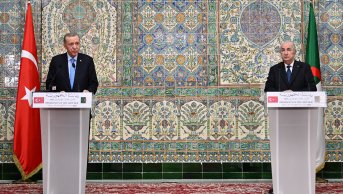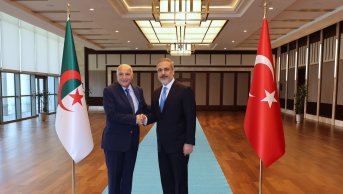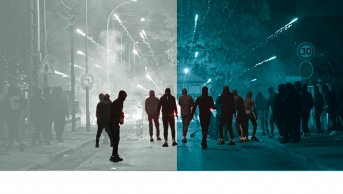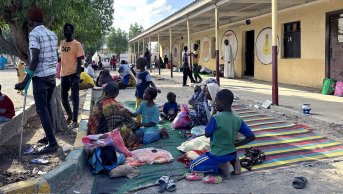Tunisia Between Political Instability and Economic Uncertainty
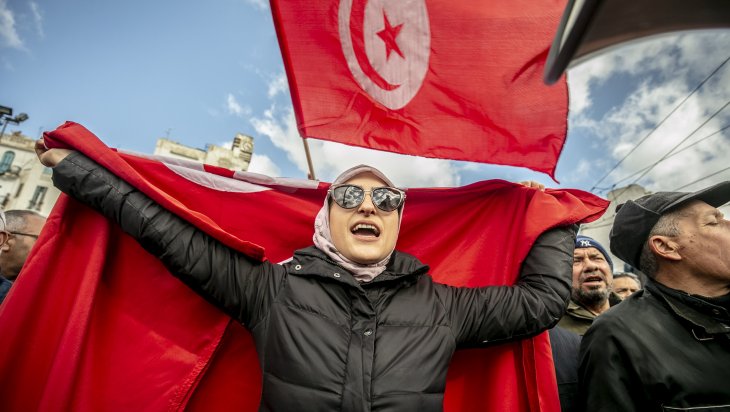
On July 25, 2021, Tunisian President Kaïs Saïed, who was elected in a landslide victory in 2019, marked the end of an eight -year institutional struggle that began with the December 2010 Jasmine Revolt. Tunisians rose up against injustice, corruption, poverty, and political repression, forcing President Zine al-Abidine Ben Ali to flee the country in January 2011.
The success of the popular revolt of the first wave of Arab uprisings that came to be known Tunisia’s political Tunisiami.
An inspired wave of similar protests throughout the MENA region, the origin of the revolt that changed the MENA region's political landscape, started after Mohammed Bouazizi, an unemployed 26-year-old, protested government injustice and corruption by setting himself on fire outside a municipal office in the town of Sidi-Bouzid in central Tunisia on December 17, 2010.
In spite of the political upheaval and ensuing political, economic, and financial turbulence, Tunisian people felt a ray of hope from their “Jasmine Revolt.” However, political parties and elite were and continued in their state of denial, and in the post-coma recovery, making sure that then the ongoing healthy political process does not fall into political regress, a process did make the region’s political elite, media and political parties envious of Tunisian voters, who were still believing in their revolt, despite losing trust in traditional political leaders and elite.
A lack of credibility in politics is apparent among the voters across the MENA region nowadays.
Such a political Tunisiami severely “shifted” in President Kaïs Saïed’s story narrative, writing off the political parties, the elite, and the Tunisian people who did strongly believe in civility and hope as a way of salvation from dictatorship. His latest constitutional actions and political behavior are disrespecting millions of men and women, struggling for freedom, dignity, and even, one day, direct democracy.
Tunisians are worried today about political instability and economic uncertainty.
What happened to Tunisian exceptionalism?
In a political and intellectual exceptionalism that left analysts wondering about Tunisia’s domestic politics for decades. As one may have thought, it’s a local virtuous characteristic, nonetheless, in Tunisia, it’s anything but local in politics. President Kaïs Saïed was elected in the fall of 2019, and on the message of the Jasmine’s Revolt scent and spirit, he easily defeated Tunisia’s conventional political parties, notably a-Nahdha party. He himself referred to his 2019 election victory as a new revolution.
President Kaïs Saïed, who does not have a political party that he could rely-on in parliament or in the local municipalities. He called himself politically and ideologically “independent,” a former constitutional law professor. Once elected, he appeared almost like a lame duck president because of the country’s constitution, which does not give the president large executive powers, while leaving daily administration to the government, which is accountable to parliament. As a result, the president could only watch military and foreign affairs domains, which made the constitutional process worse, and created a real "hung parliament" scenario in Tunisia.
Hence, political tensions and divisions emerged, provoking a frontal clash with the then House Speaker, Sheikh Rashed al-Ghanouchi, and Prime Minister, Hicham al-Michichi, who believed himself to be the president’s man. On July 25, 2021, President Kaïs Saïed decided to fire his Prime Minister and freeze the MPs' legislative session, ending Tunisian exceptionalism.
How this happened?
A “soft” constitutional coup was orchestrated by a president who had the ability to read between the lines of the fragile constitution established to trim a-Nahdha party’s wings, limit its influence, and ultimately cornered the Islamists in the new Tunisia post-Ben Ali. The president used article 80 of 2014 Constitution, using the exceptional circumstances context. He implicitly enhanced the role of the military, which is a new political element in Tunisian politics, by bringing the military to the political arena; a scenario even then-President Bourguiba did not do — to the contrary, he sidelined the military, using the police and its domestic intelligence instead. Later, late General Ben Ali ousted him in 1987 and applied the same method for better control of any political opposition.
President Kaïs Saïed thought, he could govern with a technocratic government because, under those constitutional conditions called exceptional circumstances, governing with executive-order that goes well with the anti-revolution camp like MP Moussi Abir, the leader of the Free Destourian party, who has been vocally opposed against a-Nahdha and a vehement opponent of the legislative branch and its Speaker Sheikh Rashed al-Ghanouchi.
In these blurry constitutional circumstances, Tunisia found itself at a dead-end road, after a decade of democracy or at least a healthy learning process of participative democracy in the MENA region, President Kaïs Saïed acted like another authoritarian leader in the region, sacking legitimate MPs and the government, despite all the negative signs that both branches have been sending to the voters.
President Kaïs Saïed’s bold decision to sack the executive and the legislative branches in 2021 came during another worrisome health pandemic, COVID-19, the consequences of which had terribly affected Tunisians socio-economically. With the ongoing conflict in Ukraine as a backdrop, y President Kaïs Saïed considered political alibis in order to move forward and further discredit the opposition and the elite alike further.
Tunisians, nevertheless, did end decades of autocracy but did not know how to make serious room for democratic reforms that the masses have been waiting for, lacking good governance, economic prosperity, and polity among the opposition leaders.
On July 25, 2022, Tunisian President Kaïs Saïed organized a referendum for a new constitution that went with his political agenda. A referendum was what President Kaïs Saïed wanted to be his turning point, correcting the Jasmine Revolt’s direction and goals. The referendum’s results showed a landslide victory for the yes vote (94%), with a low turnout (30%).
The low turnout had confirmed the dialectic relations between the voters and the system, despite the rhetoric of the president. The large majority of the masses did not adhere to the president’s populist discourse. Yet, with 2.6 million Tunisians voting in favor of the new constitution, it was a renewed landslide victory for the president. The new Constitution provides for significant variations to the 2014 system. It establishes a presidential system, while the opposition was insisting on the establishment of a Constitutional Court, and most probably the amendment of the Code on Local Authorities, ahead of the 2023 municipal elections after Dec 17, 2022, legislative elections another fiasco that created a ditch between his actions and the oppositions.
Where is Tunisia heading?
Thus, the success of the Tunisian uprising in 2010 is due to the state of societal homogeneity, the absence of religious and ethnic divisions, in addition to the military establishment's distance from political affairs so far. Also, based on the political approach adopted by the a-Nahdha party, based on political consensus with its ideological adversaries, even in the Sunday, Dec 17, legislative elections, a-Nahdha has decided not to participate in the elections, to not add more fuel to the flames!
Though the absence or the implicit boycott of a-Nahdha and all the forces that led the January 14, 2011, march are leaving the field for other forces— the so-called Gathering movement (a-Tajmouaa) and Nida Tounes — and the odd attitude of the Tunisian labor union (UGTT) in light of the ongoing struggle between the oppositions and President Kaïs Saïed. A-Nahdha leaders have been arguing that they are doing this for the sake of national unity and political stability, but analysts see this as confirmation of a-Nahdha’s political identity crisis in a hostile political environment nationally and regionally.
President Kaïs Saïed seems okay, getting more constitutional powers and positioning himself in the new posture of Tunisia’s strongman, with questionable legitimacy and harsh economic realities that are impacting a great deal of Tunisians’ purchasing power following COVID-19 and the ongoing Ukraine War consequences. Two economic imperatives have pushed President Kaïs Saïed administration to kneel down before the IMF conditions — conditions that could provoke another waves of political Tunisiami in the country.
In sum, Tunisians feel that their dream had evaporated, and youths still believe in a better life elsewhere, crossing illegally to Italian shores. Years have passed, and Tunisia is still struggling to implement the Constitutional Court that President Kaïs Saïed promised to put in place to serve as a strong legal tool between the two state branches and a better “checks and balances” principle.

